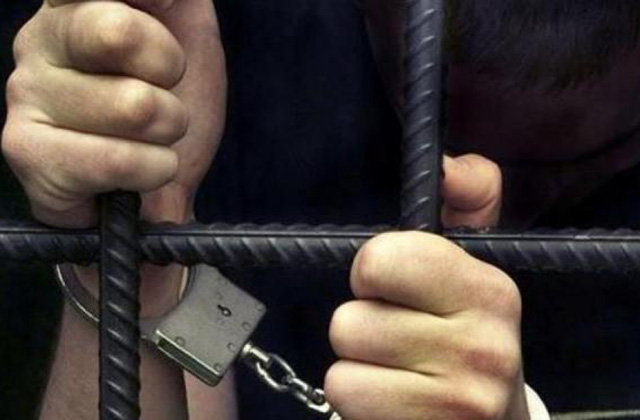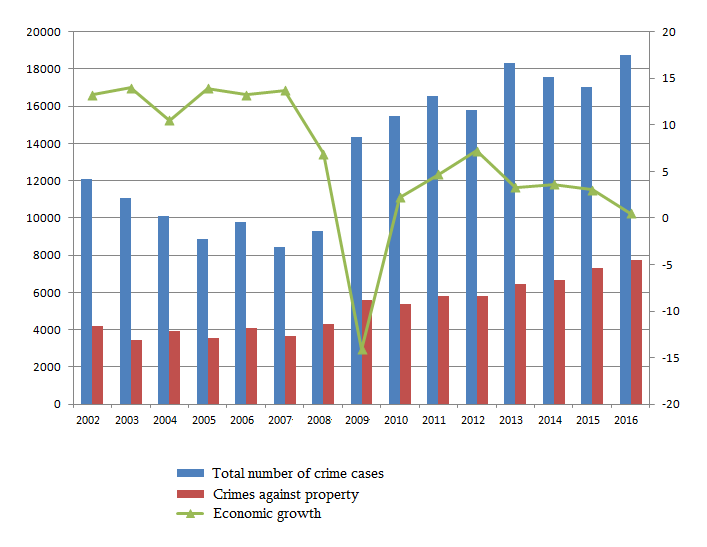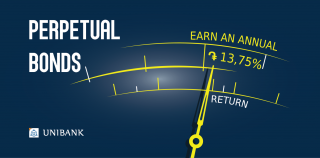
Liaison between economy and crime

Speaking of Armenia, when we intend to stress tourism privileges of our country, we almost always state that it’s safe here—level of crime is low.
It’s really a crucial circumstance and our country is really safe. It isn’t our subjective opinion, when we say we can safely walk at any night hour in any part of the city. Data issued by international researches also edify this.
For instance, Numbeo portal assesses the level of crime and safety upon the results of polls among website visitors.
Up to 20 points is considered very low index of crime, 20-40 points—low crime level, 40-60 points—moderate, 60-80 points—high, 80 points and more—very high level.
Upon Numbeo’s freshest data level of crime in Armenia is assessed 27.08 points, i.e. it’s even lower than the lowest dimension. Among observed 125 countries Armenia is ranked the 19th as a safe country. It’s safer in our country, than in most of European countries (for those interested it should be stated that the safest countries are Qatar and Singapore, and the most unsafe—Papua New Guinea and Venezuela). Moreover, regarding some types of crime (e.g. violence due to skin color or national belonging) Armenia is in the top 5 safest countries.
This, of course, is good, however, this doesn’t mean that we have no need to bother.
The point is that level of crime in the Republic of Armenia is intensively growing throughout recent years. Moreover, this allegation is grounded not on polls, but concrete measurable statistics.
Thus, according to data issued by National Statistical Service of Armenia 18764 criminal cases have been recorded in 2016 compared with previous year’s 17043, i.e. number of crime has increased by 1721 or 10%.
It should be stated that this is an unprecedented high index. Until 2016 biggest crime index was recorded in 2013—18333. And for instance, in 2006 number of crime cases comprised around 9700, i.e. throughout 10 years crime was doubled.
This is becoming bothering, when we compare number of crime cases with that of population. Number of population, even upon official statistics has reduced in the last 10 years, which means, number of crime cases per person has more grown.
Why did criminality grow? The most widely spread opinion is that it has direct connection with social and economic condition, i.e. the harder the situation, the less the incomes are, thus, more crime cases. Deepening of social polarization is also added to this, when difference in consumption of the wealthy and the needy is becoming more vivid.
Few people will deny the fact that social and economic condition has an effect on the number of crime cases (particularly of economic nature). However, it’s a question to which extent it impacts. Maybe criminal soap operas or other circumstances contribute to growth of crime. There is no concrete analysis for Armenia, however, we decided to combine the dynamics of crime in different years and economic growth.

As we may see in the Chart (high columns) in early 2000s number of crime cases was reducing with small deviations. In 2009 that number sharply grew reaching 14339 from 9271. In the following years variations have been recorded—growth and decrease, however, number of crime cases never decreased from the index of 2009 per year.
Now it’s worth paying attention to the curve, which shows economic growth. In the period of 2002-2007 we had double digit economic growth. 2009 was a critical year—14.1% economic decline was recorded.
In 2016 temp of economic growth reduced up to 0.5%.
At first glance the Chart proves the thesis, that number of crime cases throughout years of economic growth reduce, and vice versa. The most vivid point is 2009—economy decline and 50% growth of crime. However, diversions are observed here as well, e.g. in the period of 2010-2011 economy has grown, however, level of crime has grown as well. Of course, it may be stated that impact of 2009 crisis also worked in the forthcoming years. However, there is another crucial factor as well.
Usually due to hard social conditions crime against property increases—robbery, theft, embezzlement and etc. In this regard, as we may see (short columns), after 2009 number of crime cases against property has constantly grown. However, during double digit growth crime didn’t decrease, but varied in average around 3800.
All this means to assess real interrelation of economic growth and crime serious analysis is necessary, which will take into account all the circumstances (change in the number of population, political developments—elections and etc., quality of judicial system and etc.).
However, it should be noted that it’s impossible to deny that liaison. God forbid, if in 2017 economic decline or low growth is recorded, however, in such case we’ll once again get convinced in this regularity.
Finally, it should also be stated that absence of serious analysis of different interested parties allows commenting on the figures as it’s appropriate, e.g. growth in number of crime cases may be introduced as a proof to change the legal system (in the sense that crime isn’t being concealed like before).
By Babken Tunyan























